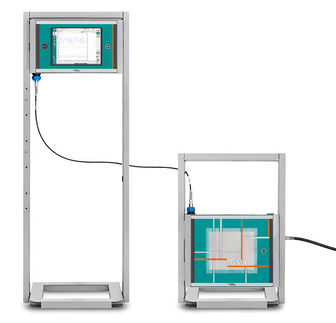A downloadable version [1] of the BBCH Scales, including illustrations, is available from the BBA [2] (Federal Biological Research Centre for Agriculture and Forestry)
Phenological growth stages and BBCH-identification keys of peanut
|
| Code
| Description
|
| Principal growth stage 0: Germination
|
| 00 | Dry seed
|
| 01 | Beginning of seed imbibition
|
| 03 | Seed imbibition complete
|
| 05 | Radicle emerged from seed
|
| 07 | Hypocotyl with cotyledons breaking through seed coat
|
| 08 | Hypocotyl reaches the soil surface; hypocotyl arch visible
|
| 09 | Emergence: hypocotyl with cotyledons arising above soil surface (“cracking stage”)
|
| Principal growth stage 1: Leaf development (Main shoot)
|
| 10 | Cotyledons completely unfolded1
|
| 11 | First true leaf (pinnate) unfolded1
|
| 12 | 2nd true leaf (pinnate) unfolded1
|
| 13 | 3rd true leaf (pinnate) unfolded1
|
| 1 . | Stages continuous till . . .
|
| 19 | 9 or more true leaves unfolded.1 No side shoots visible2
|
| Principal growth stage 2: Formation of side shoots3
|
| 21 | 1st side shoot visible
|
| 22 | 2nd side shoot visible
|
| 23 | 3rd side shoot visible
|
| 2 . | Stages continuous till . . .
|
| 29 | 9 or more side shoots visible
|
| Principal growth stage 3: Main stem elongation (Crop cover)
|
| 31 | Beginning of crop cover: 10% of plants meets between rows
|
| 32 | 20% of plants meets between rows
|
| 33 | 30% of plants meets between rows
|
| 34 | 40% of plants meets between rows
|
| 35 | 50% of plants meets between rows
|
| 36 | 60% of plants meets between rows
|
| 37 | 70% of plants meets between rows
|
| 38 | 80% of plants meets between rows
|
| 39 | Crop cover complete: 90% of plants meets between rows
|
| Principal growth stage 5: Inflorescence emergence
|
| 51 | First inflorescence buds visible
|
| 55 | First individual flower buds visible
|
| 59 | First flower petals visible. Flower buds still closed
|
| Principal growth stage 6: Flowering
|
| 61 | Beginning of flowering
|
| 62 | First carpophore pegs visible
|
| 63 | Continuation of flowering
|
| 64 | First carpophore pegs visibly elongated
|
| 65 | Full flowering
|
| 66 | First carpophore pegs penetrating the soil
|
| 67 | Flowering declining4
|
| 68 | Tip of first carpophore pegs growing horizontally in the soil
|
| 69 | End of flowering4
|
| Principal growth stage 7: Development of fruits and seeds
|
| 71 | Beginning of pod development: tip of first carpophore pegs swollen (at least twice the original diameter)
|
| 73 | Continuation of pod development: beginning of pod filling: first pods have attained final size and are ripening
|
| 75 | Main phase of pod development: continuation of pod filling
|
| 77 | Advanced pod filling
|
| 79 | Fresh seeds fill the cavity of the pods which have attained their final size
|
| Principal growth stage 8: Ripening of fruits and seeds5
|
| 81 | Beginning of ripening: about 10% of pods developed to final size are ripe
|
| 82 | About 20% of pods developed to final size are ripe
|
| 83 | Continuation of ripening: about 30% of pods developed to final size are ripe
|
| 84 | About 40% of pods developed to final size are ripe
|
| 85 | Main phase of ripening: about 50% of pods developed to final size are ripe
|
| 86 | About 60% of pods developed to final size are ripe
|
| 87 | Advanced ripening: about 70% of pods developed to final size are ripe
|
| 88 | About 80% of pods developed to final size are ripe
|
| 89 | Full maturity: nearly all pods developed to final size are ripe
|
| Principal growth stage 9: Senescence
|
| 91 | About 10% of above ground parts of plant dry
|
| 92 | About 40% of above ground parts of plant dry
|
| 93 | About 30% of above ground parts of plant dry
|
| 94 | About 40% of above ground parts of plant dry
|
| 95 | About 50% of above ground parts of plant dry
|
| 96 | About 60% of above ground parts of plant dry
|
| 97 | Above ground parts of plant dead
|
| 99 | Harvested product
|







